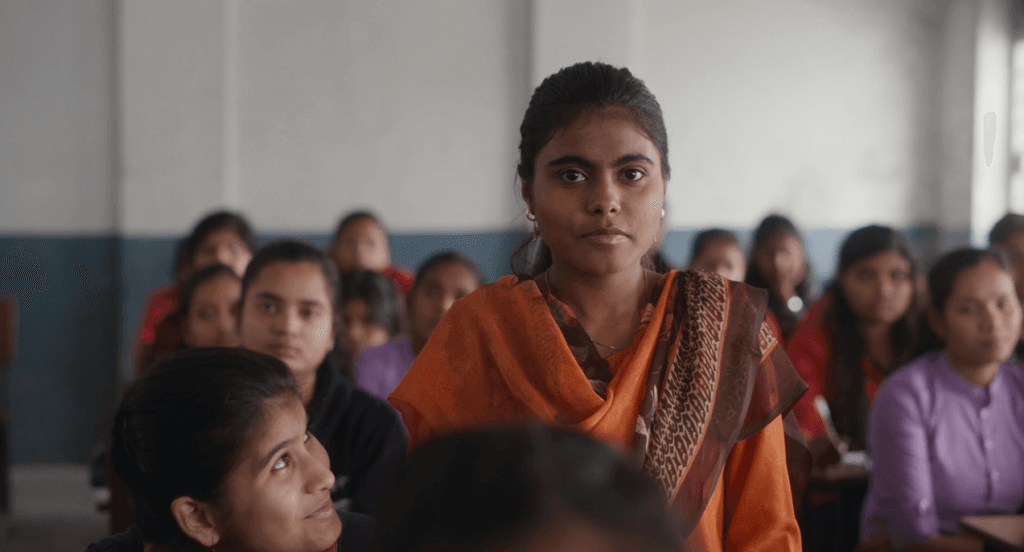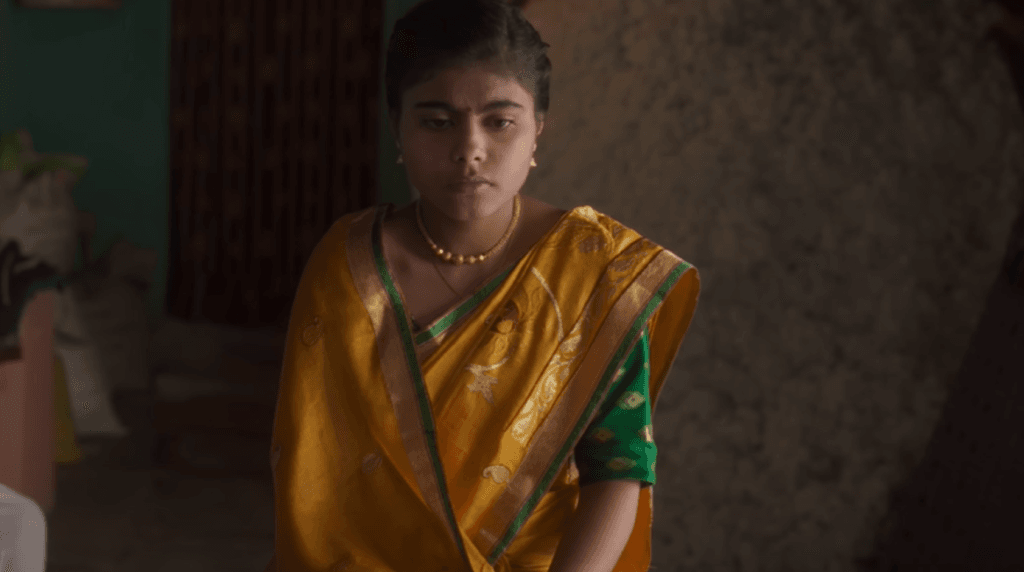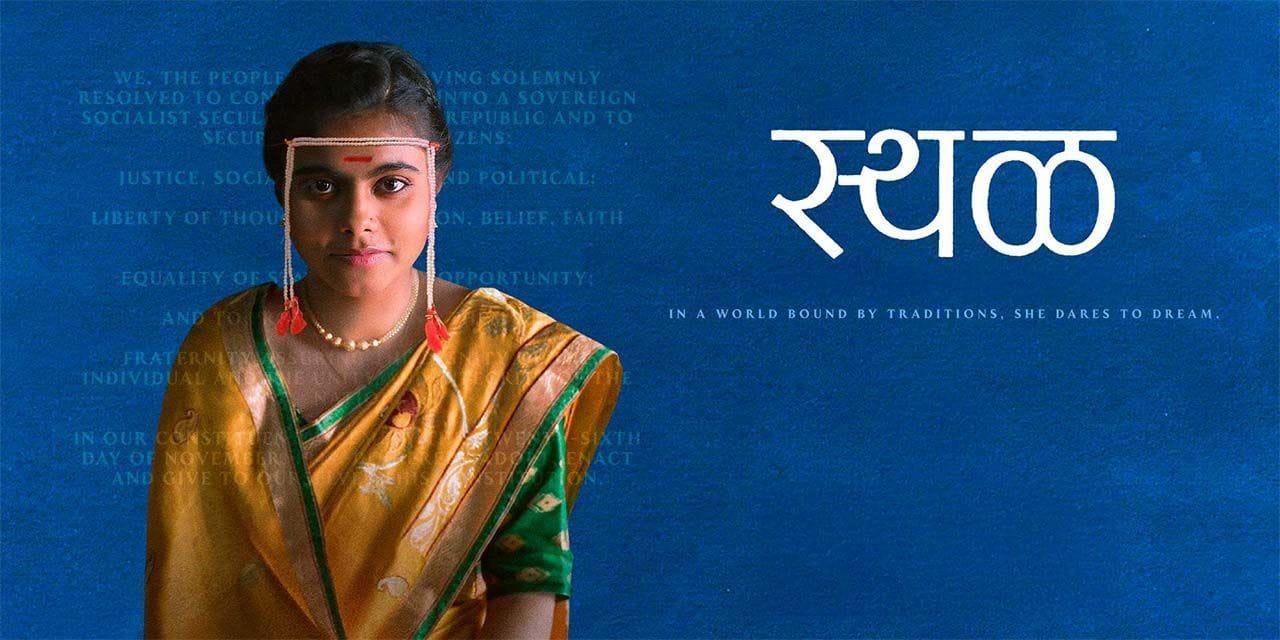Sthal (A Match), Jayant Digambar Somalkar’s debut Marathi film—a staunch critique of matchmaking and arranged marriage rituals in rural Maharashtra— was released in the theatres on March 7, 2025, on the occasion of International Women’s Day. It had a world premiere at the 48th Toronto International Film Festival (TIFF) 2023, where it won the NETPAC Award for Best Asian Movie.
Sthal follows the life of Savita (Nandini Chikte), a young woman from Dongargaon—a small town in Maharashtra. She lives with her parents and brother. Her father is a cotton farmer who wants to get her married as soon as possible— the burden of an unmarried daughter sits heavy on his chest. The desperation to get her married is such that she is paraded in front of the groom’s family a few times a week.
A dream of agency and the constant cycle of humiliation in Sthal
Sthal starts with a moment that almost seems prophetic—Savita, along with her friends and female family members, questions the prospective groom while he sits on a stool in front of them, head lowered as Savita interrogates him. But then Savita wakes up from her dream. This reversal of roles is as brazen as it is thought-provoking.

The constant dehumanisation of women, stripping them of their individuality and depersonalising them by subjecting them to questions that are humiliating, and Somalkar very tactfully deconstructs the normalisation of matchmaking in Maharashtra and India at large.
The opening scene with roles reversed sets the tone for the whole film. Right after Savita wakes up from the dream, what starts is a repetitive cycle of interrogation enforced on her, stripping her of her agency and expecting her to just bear the judgemental gaze of the groom’s male relatives. Savita is a 3rd-year college student that studies sociology and aspires to sit for competitive exams.
However, her parents are on a quest to find her a groom and send her off. Thus, Savita becomes a commodity, part of a barter exchange as the prospective male relatives dissect her appearance and eventually decide if she is worth the ‘trade.’
There is no saviour, just a depiction of the biting reality that still dictates the lives of so many women.
Savita is picked on for her complexion; her height and her plain looks make her a challenging marriage prospect. The male relatives take charge of the interrogation, highlighting the power they hold over these decisions. The women in Savita’s family do not have a voice either. They just exist to make the house presentable, cook and serve the groom’s family and then retreat behind the walls. While all her friends are getting married, she continues to be rejected, and this becomes a sight of concern for her family, who want to just get her married. As Savita follows the routine of this cyclic reputation, she also continues to dream of studying further—a silent resistance.
Romance and reality: Shattering the rose-coloured glasses
In her college, Savita falls in love with her sociology lecturer, who is equally drawn to her. He teaches about women’s empowerment and the importance of women having their choices. Savita finds his progressive thought attractive, considering him gentle and different from all the men she has ever encountered. Their subtle eye contact while standing on either side of a raised newspaper in the library is a stark contrast to the scenes of prospective families coming over. It tried to highlight the progressive space and the liberal environment around them that looked like it would be the changing point of the story. The story breaks the cycle of patriarchal humiliation and establishes a connection rooted in equal love, respect, and progressive inclinations.
However, what follows settles the reality in place. Many theoretical ideals fail to translate into practice. The patriarchal institution is too heavily rooted in the society, so much so that it doesn’t even escape the seemingly progressive teachers. The teacher who speaks of women’s empowerment submits to his family’s wishes and asks for dowry. Thus, there is no saviour, just a depiction of the biting reality that still dictates the lives of so many women.
The cinematography that highlights the ordinary
The cinematography holds on to the richness of the ordinary life of rural Maharashtra, capturing the mundane with such biting realness that it is sure to leave an impact. While Sthal is a searing reflection of the absurdity of “bride selection,” it doesn’t become preachy. It speaks of the societal limitations and irrationality of the matchmaking tradition by focusing on the humiliation that Savita faces every time the prospective groom’s family comes over to ‘interrogate’ the bride, a scene that has been replayed several times in the film.

The film follows more of an observational approach, making the viewers uncomfortable with the reality it unfolds. The film allows the monotony and humiliation of Savita’s experience to tell its own story. There’s no melodrama, no obvious villains, just a chilling yet observational lens on society built on structures that strip women of autonomy in the name of tradition. By staying rooted in Savita’s perspective, the film urges the audience to question the very fabric of these customs.
Performative rituals and the commodification of self
In a research paper titled “Performative Quality in the Ritual of Matchmaking in Serena Nanda’s Essay ‘Arranging a Marriage in India,'” the author has talked about performative aspects of traditional matchmaking. It talks about how social pressure and traditional structures often suppress individual agency in favour of communal roles, values, and expectations.
Marriages, rather than being a legal and emotional commitment, have become a ritualised transformation of social identity. And the performative nature of matchmaking, which is evident in the “presentation of self” in front of the groom’s family, is designed to uphold cultural continuity while actively denying women agency—thus entrapping them in a cycle of ritualised humiliation and commodification. Here conformity becomes important, often prioritised over individual preference, which is very well depicted by Somalkar through the observational lens he provides the viewers.
This matchmaking process, more than being a princess and selecting life partners, becomes a cultural stage where values of duty, hierarchy, and tradition are performed, reaffirmed, and passed on.
No resolutions in Sthal
Through Sthal, Somalkar doesn’t really offer any resolutions. He portrays the mundane, deeply human and silently radical portrayal of a young woman engulfed in the relentless machinery of cultural tradition. Savita dreams of fulfilling her ambitions while being entrenched in the structure that offers her no voice and no agency. The actors in the movie are mostly new to the scene, thus adding a rawness and an authenticity to the characters. Nandini Chikte, in particular, plays Savita with a distressing realness.
The constant, cyclic and ‘natural,‘ presentation of humiliation that she is subjected to settles with discomfort. A discomfort of recognising the normalcy attached to these everyday customs. Somalkar delivers a deeply moving debut—cinema that captures the sharpness and oppressiveness of everyday life, observant of the practices that have become norms in the name of culture. The film lingers in its simpleness and speaks volumes of the society that disguises control as culture.
About the author(s)
Reeba Khan is a Political Science student at Delhi University. As a writer and student journalist, she has a keen interest in issues of identity, conflict, and politics of belonging. She writes to remember and to resist






